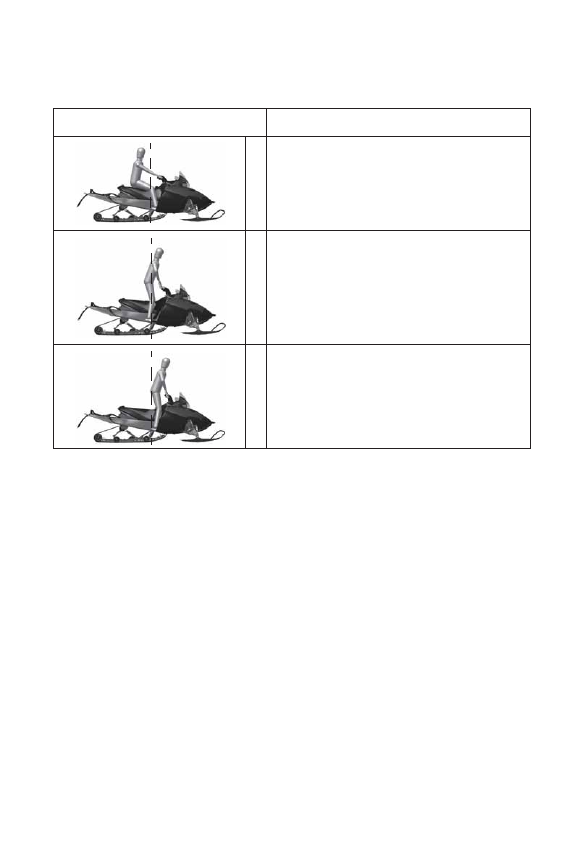Snowmobile Polaris Turbo IQ LXT (2014 year). Instruction - part 8

35
FEATURES
RIDER SELECT Adjustable Steering System
Choosing the Best RIDER SELECT Position
Position
Riding Style
1
2
3
Relaxed Trail Riding
Rider weight is slightly behind the center
of the snowmobile for comfortable and
relaxed riding.
4
5
General Trail Riding, Boondocking,
Deep Snow Riding
Rider weight is centered on the snowmo-
bile, providing balance, comfort and con-
trol for both novice and experienced
riders. This is the recommended position
for most riding situations.
6
7
Snowcross/Steep Hill Climbing Only
Rider weight is ahead of the center of the
snowmobile, adding weight to the skis and
making the snowmobile heavier in the
front. These positions are ONLY for snow-
cross and severe hill climbing.